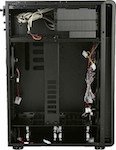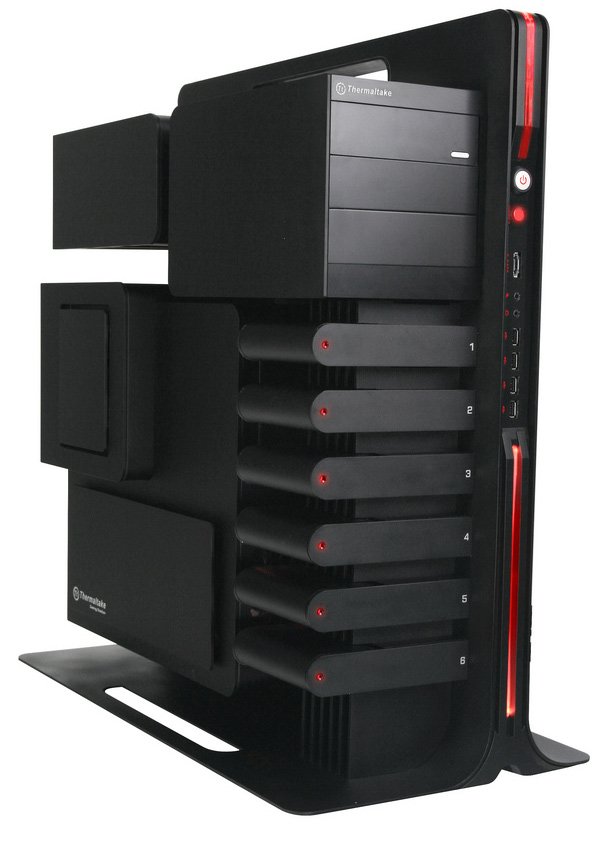
When building a gaming PC and have chosen all of the hardware parts you want for your build, you have to then have somewhere to assemble and put them into. In this article I discuss four steps that you should go through when making the decision as to which computer case you should purchase. Four Things to Keep in Mind When Purchasing Your Computer Case: Choosing the right computer case for you can be as tough as you want it to be, and can change based on a few variables. The selection of cases out there are vast, and the prices vary just as much, so when choosing the right case ask yourself these four questions:
Step One: What is The Form Factor I am Looking For?
The most important aspect of your computer case is determining whether it can actually fit the components you bought for it, this is called a computers form factor. Depending primarily on the size of motherboard you are deciding to purchase your case will fit different sizes. The sizes of desktops generally include: ATX Desktop, ATX Full Tower, ATX Mid Tower, ATX Mini Tower, MicroATX Desktop, MicroATX Mid Tower, MicroATX Desktop Mini Tower, MicroATX Slim Case, Mini-ITX Tower, and Mini-ITX Desktop.
Now do not be daunted by all the choices given because the main form factors to focus on here are ATX, MicroATX, and the less common Mini-ITX. Usually when you purchase a motherboard you can find what form factor (size) it is by looking at the name (ex. GIGABYTE GA-X58-USB3 LGA 1366 Intel X58 USB 3.0 ATX Intel Motherboard) which will tell you the form factor for that motherboard. In the previous example you can see that ATX is the form factor for the Gigabyte mother board. If it is not in the name of the board, you could also look at a motherboard description/details either from the re-seller or manufacturer.
Step Two: What Size of Case do you Need?
There are several sizes of cases within the different form factor dimensions (ATX, MicroATX, Mini-ITX) which as stated above include: ATX Desktop, ATX Full Tower, ATX Mid Tower, ATX Mini Tower, MicroATX Desktop, MicroATX Mid Tower, MicroATX Desktop Mini Tower, MicroATX Slim Case, Mini-ITX Tower, and Mini-ITX Desktop. the different sizes of desktops determine how much you can fit into your case. The descriptions “Full Tower”, “Mid Tower”, “Mini Tower” etc. are simply the size descriptions of a given computer case.
When determining what size of case you want keep in mind all of what you are putting in your computer. This includes how many hard drives, optical drives (CD/DVD/Blu-Ray), the number/size of graphics cards you plan on using, and any other accessories you may be including in your build. Also, keep in mind what you want to add things to you computer in the future, or possibly use the same case in a future build.
Step Three: Does This Case Have Enough Cooling?
Cooling and ventilation can be an important factor when choosing a case, since the last thing you want is a cramped case that will contain all the heat you computing will excel while processing. Generally if you want sufficient cooling for any given system look for a simple Mid Tower sized case that comes with a few fans. Unless you are doing any serious overclocking etc. this should work out just fine, and if you are looking to do allot of overclocking you would be better off getting a high quality CPU cooler to use instead of the stock one that came with your processor. If you are concerned whether the case you are trying to purchase has enough cooling look around for some reviews on it. Generally a re-seller will include item comments, or you can type the case name in google and see what you can find.
Step Four: Case Esthetics – What do You Want Your Case to Look Like?
Once you have the an idea of what you want to put in your case, and the size of case to put it all in, then you want to shop for what looks most appealing to you. Cases come in a variety of colours, shapes, and include added appeal like different coloured LED lights. It really just depends on personal taste, or whether you want your case to match the florescent walls of your living space. It’s all up to you!
Conclusion:
Choosing a computer case can be a fun process as this is where you can really personalize the look of your Gaming PC. If you have any questions, or case recomendations based on your experience / want to purchase please let us know in the comments below!
And now finally, if you are interested in in building a Gaming PC please check out Newb Computer Build’s Gaming PC Builds of the Month.
OR if you need help choosing more hardware for your gaming PC build check out How to: Build a Gaming PC



Comments 7
Pingback: Intel Lga | COMPUTER COMPONENTS
Great article, do you have another with the way to choose the right case+motherboard+processor+memory configuration (to avoid problems of compatibility or mismatch of components). Thanks in advance.
Author
Hey Bertrand,
Yep now the articles are up, and you can see them here: https://newbcomputerbuild.com/how-to-build-a-gaming-pc/ for the list off all the how to build a gaming pc articles. They explain how to choose the individual parts for building your pc.
If you have any other suggestions on content I would love ot hear them.
Thanks!
It’s funny that you post a picture of that Thermaltake case. Esthetically, you would imagine it looks good. Or at least it does on a website, or in a picture. I saw one in a MicroCenter store a few weeks ago and these things are huge (when I say huge, I mean larger than any full size ATX I’ve ever seen) and ugly. On top of that, as for as cooling and ease of use, they are terrible. Surely not worth the $800 price tag. It’s a damn shame
Author
Yeah picture wise I think it looks pretty sleek, but a case at Length: 24.17″ x Width: 12.52″ x Height: 26.22″ and 47.11lbs is a beastly size. I agree as personally I could not muster up ~$800 for what its worth.
Thanks ThatGuy,
Corey
You spelled aesthetics wrong. If you haven’t yet mastered basic english, what good is the rest of this article?
Author
Nick,
Aesthetic and esthetic are interchangeable.
Thank you for your input,
Corey